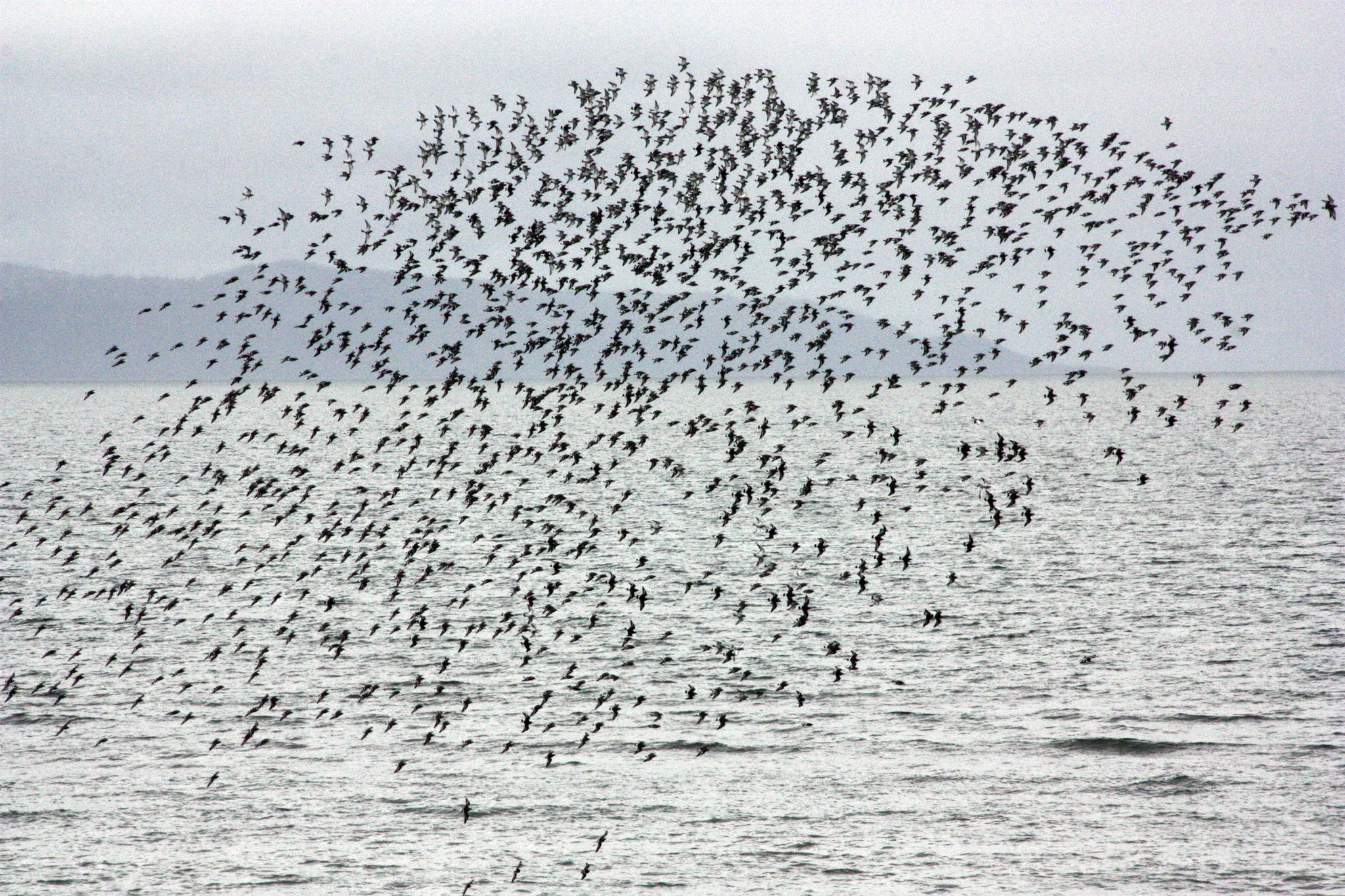Following is the third in a monthly series of articles about birds and birding, celebrating The Year of the Bird, 2018, with authors from Kachemak Bay Birders.
Throughout human history, birds have been given special recognition. The Romans considered the eagle an important symbol of power. For thousands of years, Native Americans passed on tales about raven as a magician and creator of the universe. Ancient Asian cultures considered cranes auspicious and a symbol of longevity. Natives of the Andes still revere the condor as a sun deity.
In Alaska, shorebirds also deserve special recognition. For starters, many of North America’s shorebirds are born here. The 2018 Alaska Shorebird Conservation Plan says, “Alaska provides breeding habitat for more shorebird species than any other state in the U.S. Seventy-three species of shorebirds have occurred in Alaska; 37 of them regularly breed in the region.”
Like Homo sapiens, shorebirds utilize about every type of habitat the earth has to offer. Often their breeding and wintering grounds are opposites. Western Sandpipers leave balmy tropical beaches where they winter to nest in the much colder (even in summer) tundra of Alaska. Surfbirds earn their name during the winter when they forage on wave-beaten rocky beaches along the North and South American Pacific Coast. Then they head north to nest high in the alpine tundra of Alaska and the Yukon. Each species of shorebird has its own story, much to the amazement of birders. Shorebird populations often serve as an indicator of how these habitats are doing biologically.
Shorebirds truly are international ambassadors. Most species that breed in Alaska migrate in the fall past the U.S./Mexico border, with about one-third going all the way to South America or the South Pacific. Most of these migrants feed and rest at key stopovers in every country along the way. Their concentration at these stopovers is a big attraction to residents and visitors, connecting these different places and cultures. Those striving to protect shorebird populations know they have to be stewards for their local habitat, but that their efforts depend on other places as well. Currently, efforts are underway to connect all countries and cultures that have shorebird habitat into one shorebird conservation network.
Kachemak Bay is one of those places. While there are some shorebird species that nest here, most use Kachemak Bay’s relatively pristine habitat for spring or fall migration stopovers. Shorebirds recognize the value of Kachemak Bay, and so do its people. For example, most of the waters and intertidal area of Kachemak Bay are now recognized as a WHSRN (Western Hemisphere Shorebird Reserve Network) site. This designation does not have regulatory authority, but does indicate to the world that its residents support shorebird conservation; they are good stewards. For almost three decades now, the residents of Homer and Kachemak Bay have been considered leaders in shorebird conservation. This was clearly demonstrated in 1992 when some of these leaders initiated the Kachemak Bay Shorebird Festival. The reputation was furthered in 1994 when the City of Homer nominated its Mud Bay and Mariner Park Lagoon properties as a WHSRN site, with the Alaska Department of Fish and Game following suit by nominating the Fox Creek Critical Habitat Area. Now, the Shorebird Festival is running strong and is as good as ever. And the Kachemak Bay WHSRN site was significantly expandedto include all of the Kachemak Bay Critical Habitat Area as well as city, state and federal properties in Beluga Slough.
So do the shorebirds care? Well, I think so. For the last 10 years, Kachemak Bay Birders have been conducting a citizen science project to monitor the spring shorebird migration that stops over at Kachemak Bay. Our monitoring data seems to indicate that populations are not continuing to decline, and may even be slightly increasing. This is really good news considering that the 2016 State of North American Birds report found that “Migratory shorebird populations have declined by almost 70 percent since 1973.” However, Kachemak Bay is only a cog in the wheel. Also, if there is recovery, much credit goes to those who made valiant shorebird conservation efforts elsewhere (e.g. international pressure on Panama to prevent destruction of protected mangrove swamps that provide significant winter habitat for shorebirds). But what our efforts do demonstrate is because of our previous efforts to protect habitat, Kachemak Bay is a good place for monitoring changes that are of a larger scale. We know shorebirds are special and will continue working for their recovery, and hope they continue to visit Kachemak Bay.
George Matz is a dedicated birder and has coordinated the Kachemak Bay Shorebird monitoring program for the past 10 years.
This article is brought to you by the Kachemak Bay Birders. For more information about Kachemak Bay Birders birding trips, meetings, and other activities and events, go to kachemakbaybirders.org. Check out also the Bird of the Month, Citizen Science opportunities, Local Bird Information and much more.


